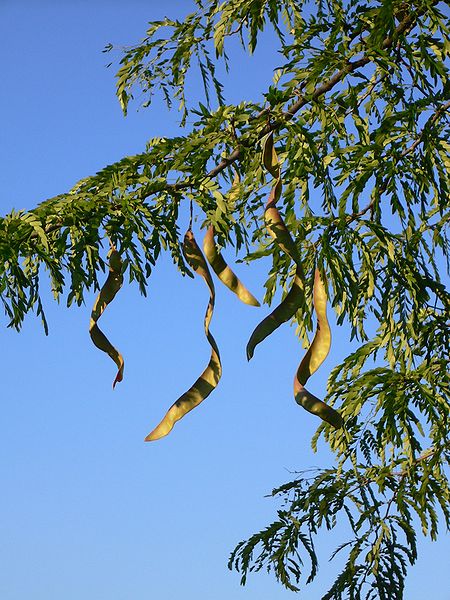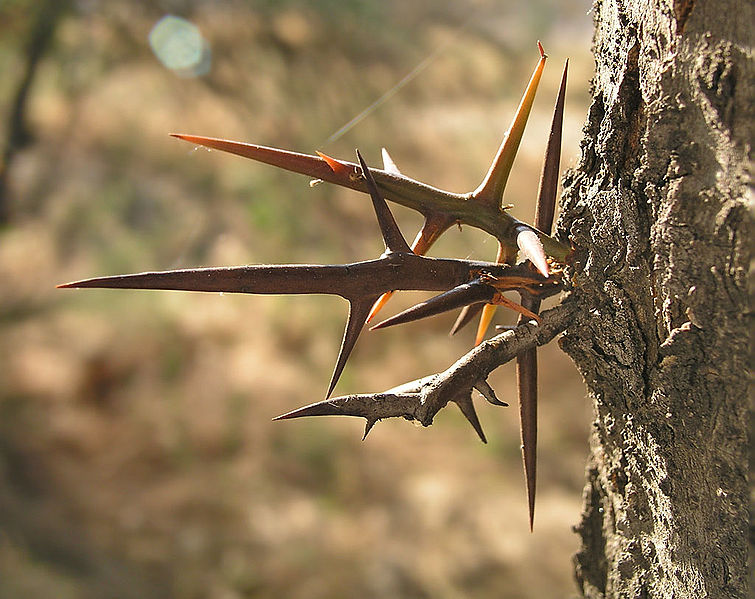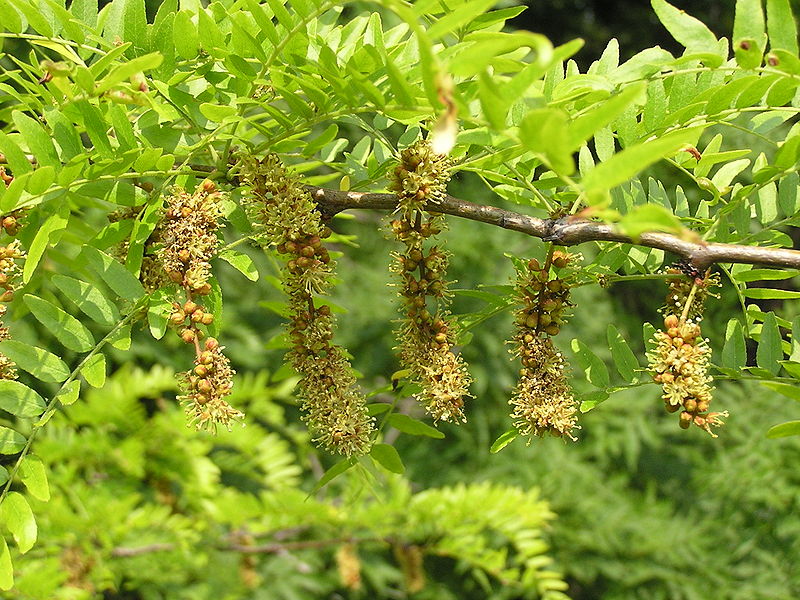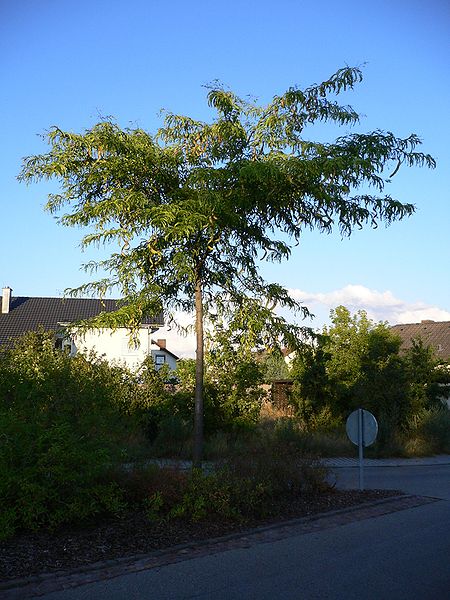I’ve just ordered another selection of wattle seeds, to germinate and plant out. These are all varieties with edible seeds, so they’re a pretty good multi-purpose plant. The idea is to plant about half of them in our Zone 5, along with holm oaks, cork oaks, stone pines, and a variety of other semi-wild food plants and bee forage plant species – the other half will go in the pasture/woodland area as shade trees.

This pasture area is going to include a series of paddocks through which our poultry and the hypothetical future goats (and maybe cow!) will be rotated. There will be fruit trees in the mix, well protected from hungry ruminants, but also a lot of multi-use fodder trees and shrubs like wattles, carob, saltbush, mulberry, and honey locust.
Honey locust is an interesting one. Although it is controversial, there are indications that it’s a non-nodulating nitrogen fixer, and it certainly grows well even in nitrogen-poor soils. So well that in some areas (including agriculktural areas of Australia) it is a major weed, forming thickets that take over in pasture areas. This seems odd to me, because both the pods and the foliage are edible and highly palatable to livestock. The pods, or rather the pulp inside them, is also edible to humans, and the whole pods can be cooked and eaten as a vegetable when green.
 The tree is a graceful & attractive deciduous one, often planted as an ornamental. It is 20 – 30 m tall at maturity, with feathery leaves that give dappled shade in summer. It is fast growing, and can live 120 – 150 years. The tree is extremely thorny, with thorns growing 3 – 10 cm long on average (and sometimes as long as 20cm). Apparently the thorns were used as nails in the past. The tree and be coippiced successfully, which is often done when it is grown as a fodder plant, and produces an unusual hardwood timber used for furniture, fence posts, utility lumber, and turned objects. Honey Locust trees tend to have deep taproots and fewer lateral roots, making them well suited to agroforestry systems and alley-cropping (where trees are planted in rows, with rows of crops or pasture between them). It is also a good pioneer plant, for reclaiming damaged landscapes or areas where the soil is degraded.
The tree is a graceful & attractive deciduous one, often planted as an ornamental. It is 20 – 30 m tall at maturity, with feathery leaves that give dappled shade in summer. It is fast growing, and can live 120 – 150 years. The tree is extremely thorny, with thorns growing 3 – 10 cm long on average (and sometimes as long as 20cm). Apparently the thorns were used as nails in the past. The tree and be coippiced successfully, which is often done when it is grown as a fodder plant, and produces an unusual hardwood timber used for furniture, fence posts, utility lumber, and turned objects. Honey Locust trees tend to have deep taproots and fewer lateral roots, making them well suited to agroforestry systems and alley-cropping (where trees are planted in rows, with rows of crops or pasture between them). It is also a good pioneer plant, for reclaiming damaged landscapes or areas where the soil is degraded.

What honey locust needs:
- Water – Honey Locust trees are tolerant of a wide range of conditions, including extended dry periods. They occur naturally in areas where annual rainfall ranges from 510 to 1520 mm.
- Sunlight – Full sun preferred.
- Soil – Honey Locust trees may (or may not) be nitrogen fixers. Either way, they thrive in poor soils. They grow best on soil with a pH of 6.0 to 8.0.
- Space – For agroforestry plantings, the recommended spacing is to plant each Honey Locust in a 5 – 10 m square.
- Warmth – This is a very hardy plant, capable of withstanding heavy frosts and also high temperatures. Late spring frosts may damage leaves and flowers.

What honey locust has to offer:
- Edible seed pods. Alcohol can be brewed from the sugary pulp inside the pods.
- Animal fodder (seed pods and foliage).
- Landscape regeneration, through (possible) nitrogen fixing, shade, and erosion control.
- Hardwood timber.
- Nectar for honeybees. This is not a major nectar plant, but is visited by honeybees, and will flower reliably through the hot, dry, Perth summer.
- New trees, from seed.

- For more info, see the following sites:
- University of Virginia: Honey Locust Agroforestry
- North-West Weeds: Honey Locust
- Permaculture Plants: Honey Locust
Images sourced from Wikimedia Commons:
File:Gleditsia_triacanthos_20050730_738.jpg
File:Gleditsia_triacanthos_20050730_739.jpg
File:Gleditschia-triacanthos-espinas.jpg
File:Gleditsia_triacanthos_in_Donetsk_2.jpg
File:Gleditsia_triacanthos_only_seeds.jpg